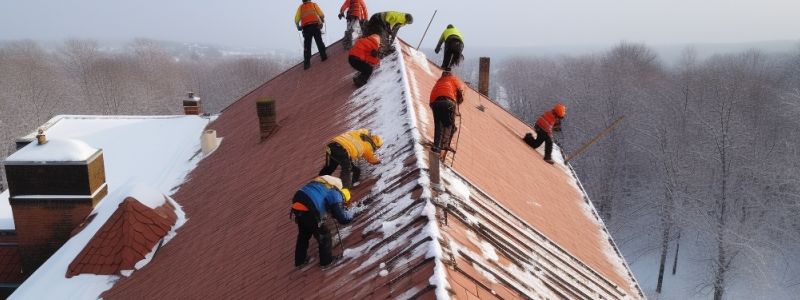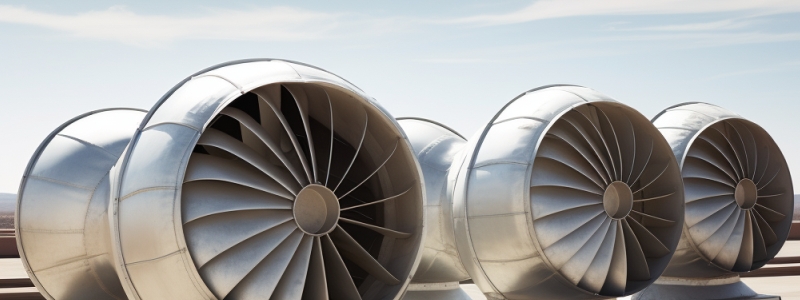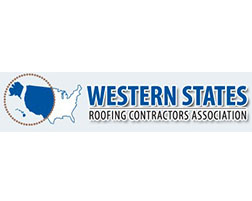
Should I Cover My Roof Turbines in the Winter?
For homeowners and business owners in Colorado, understanding the various components of roofing is crucial, especially when it comes to making informed decisions about maintenance and energy efficiency. One question that often arises, particularly as winter approaches, is: “Should I Cover My Roof Turbines in the Winter?” Roof turbines play a vital role in attic ventilation. But as the cold months draw near, many wonder if covering these turbines could offer additional benefits or protection. This article aims to shed light on this topic, providing you with the knowledge you need to make the best choice for your property.
Definition and Function of a Roof Turbine Vent
Roof turbines are a type of passive ventilation system designed to improve airflow within an attic space. These spinning roof vents are strategically placed on the roof to harness the power of the wind, allowing them to rotate and create a suction effect. This action draws out the hot, stale air from the attic, replacing it with cooler, fresh air from outside. The primary objective of a roof turbine vent is to regulate the temperature and moisture levels within the attic, preventing issues such as mold growth, wood rot, and damage to insulation. Proper ventilation is essential for maintaining the structural integrity of your home and ensuring energy efficiency. Roof turbines are especially beneficial in climates with significant temperature fluctuations, as they help in balancing the internal environment of the house. For more details on the mechanics of roof turbine vents, you can refer to this article.

The Role of Turbine Vents for Roofs in Different Seasons
Roof turbine vents, commonly known as “whirlybirds,” play a crucial role in maintaining the health and efficiency of your home throughout the year. Their primary function is to facilitate the circulation of air in the attic, ensuring that excess heat and moisture are expelled. During the summer months, these vents help in releasing the accumulated hot air, preventing the attic from becoming a furnace and thereby reducing the strain on your air conditioning system. Conversely, in the winter, they aid in preventing the buildup of moisture, which can lead to mold growth and damage to insulation.
It’s a common misconception that these vents should be covered during the winter to conserve heat. However, according to the U.S. Department of Energy, proper attic ventilation is essential year-round. In colder climates, especially, the warm air from your home can rise and meet the cold surface of the roof, leading to condensation. Over time, this moisture can compromise the structural integrity of the roof, promote mold growth, and even damage stored items in the attic. By ensuring that turbine vents remain open and functional during the winter, homeowners can mitigate these risks and maintain a healthier living environment.
Pros and Cons of Having Turbine Roofs
“Should I Cover My Roof Turbines in the Winter?” is a question that many homeowners and business owners ponder. To answer this, it’s crucial to understand the advantages and disadvantages of turbine roof vents.
Advantages of Turbine Roof Vents:
- Cost-Effective: Turbine roof vents are generally less expensive to purchase and install. They are also more energy-efficient as they utilize wind power, leading to potential savings on electricity bills.
- Eco-Friendly: The wind powers these vents, making them an environmentally friendly option.
- Improved Air Quality: Turbine vents can enhance the air quality inside your home by expelling musty odors and other contaminants.
- Durable and Low Maintenance: Manufacturers make these vents from high-quality materials and design them to last. They require minimal upkeep, with occasional checks to ensure they are free of debris.
- Extend Roof Life: By venting out hot air and moisture, turbine vents can prolong the life of your roof, preventing potential damage from condensation and mold.
- Not Reliant on Electricity: As they are wind-powered, turbine vents can function even during power outages.
Potential Drawbacks of Turbine Roof Vents:
- Roof Integrity: If not properly installed, turbines can weaken the roof structure, leading to potential damage.
- Water Infiltration: Damaged turbines or poor sealing can allow water to seep into the home.
- Sunlight Blockage: Incorrectly placed turbines might shadow parts of the roof, affecting the home’s temperature.
- Safety Concerns: Loose turbine blades can become hazardous projectiles in strong winds.
- Dependent on Wind: Turbine vents are most effective in windy conditions. In areas with little wind, their efficiency might be compromised.
- Noise: Over time, turbine vents can become noisy, especially if there’s wear in the bearings or if debris gets caught in the blades.
In conclusion, while turbine roof vents offer numerous benefits, it’s essential to be aware of their potential drawbacks. Proper installation and regular maintenance can mitigate most of these concerns.

The Necessity and Benefits of Covers for Roof Turbines in Winter
Winter brings with it a host of challenges for homeowners, especially when it comes to maintaining the structural integrity and efficiency of their homes. One such challenge is the proper ventilation of the attic space, particularly in homes equipped with roof turbines.
Roof turbines play a crucial role in ensuring a healthy roofing system. Without proper ventilation, homeowners may face issues such as premature aging of the roof, damage to rafters and insulation, rotting wood, and the growth of mold and mildew. Additionally, ice dams can form, leading to increased strain on the building’s climate control, resulting in higher energy usage and expenses.
However, during the cold winter months, there’s a common misconception that covering these turbines can help conserve heat. While it’s true that covering roof turbines can reduce the amount of heat that escapes from the home, it’s essential to understand the potential dangers of doing so. Covering these vents can trap moisture in the attic, leading to various problems, including mold growth and damage to the home’s structural components.
A proper roof ventilation is vital to prevent mold, mildew, frost accumulation, wood rot, ice dams, and damage to shingles. Airflow prevents the growth of mildew or mold and helps regulate attic temperature. Extreme temperatures in the roof area can cause snow to melt and form ice on shingles and gutters. Proper ventilation during winter can extend the lifespan of the roof and its components.
Practical Advice and Considerations for Covering Roof Turbines in Colorado’s Winter Conditions
Colorado’s winter conditions are known for their harshness, with heavy snowfall, freezing temperatures, and strong winds. These conditions can pose challenges for home or commercial owners, especially when it comes to the maintenance and care of their roofing systems. “Should I Cover My Roof Turbines in the Winter?” is a question that many homeowners in Colorado grapple with. Let’s delve into some practical advice and considerations for this matter.
- Understand Colorado’s Winter Climate: Colorado experiences a continental climate, characterized by cold winters with frequent snowfall. The state’s mountainous regions can see even more extreme conditions. Homes in Colorado face exposure to moisture from snow and ice, which can seep into the attic without proper ventilation.
- Moisture Control: Proper ventilation is crucial to prevent moisture buildup in the attic. According to a guide on winter weather preparedness by the State of Colorado, moisture can lead to mold growth, wood rot, and damage to insulation. Covering roof turbines can trap this moisture, leading to these issues.
- Energy Efficiency: While covering roof turbines can conserve some heat, it’s essential to ensure that the attic remains well-insulated. This will prevent heat loss and keep the home warm without compromising ventilation.
- Regular Maintenance: Before the onset of winter, it’s a good practice to inspect the roof turbines for any signs of wear or damage. Make sure they spin freely and debris doesn’t obstruct them.
- Seek Professional Advice: If unsure about whether to cover the roof turbines, it’s always best to consult with a roofing expert or a home inspector familiar with Colorado’s winter conditions. They can provide tailored advice based on the specific needs of the home.

Summary
The question, “Should I Cover My Roof Turbines in the Winter?” has been thoroughly examined in this article. Roof turbines play a pivotal role in ensuring proper ventilation in homes, especially in attic spaces. Their primary function is to expel hot air and moisture, preventing potential issues like mold growth, wood rot, and damages.
Colorado’s unique winter conditions, characterized by heavy snowfall and freezing temperatures, can pose challenges for homeowners. While the idea of covering roof turbines might seem appealing to conserve heat, it’s essential to understand the broader implications. Covering these vents can trap moisture, leading to various problems, including mold growth and damage to the home’s structural components.
Proper ventilation is crucial to prevent moisture buildup and ensure the longevity of the roofing system. Homeowners should prioritize regular maintenance checks, ensuring that the turbines are free from obstructions and damage. Additionally, seeking professional advice can provide clarity and tailored recommendations based on individual home or commercial needs.




































